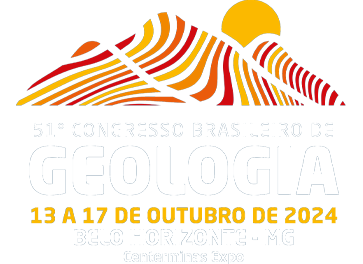Dados da Submissão
Título
3D GEOLOGICAL MODEL OF THE QUADRILÁTERO FERRÍFERO PROVINCE, BUILT FROM GEOLOGICAL MAPS AND 2D GRAVIMETRIC MODELS
Texto do resumo
The spatial characterization of the Earth's surface plays a fundamental role in a wide range of geosciences applications. Building 3D geological models is one way to evaluate the subsurface, bringing together all available data and knowledge into a model that is relevant for the purpose and scale of the investigation. The Quadrilátero Ferrífero (QF) province stands out for its world-class iron and gold deposits. However, many uncertainties remain regarding its underlying framework. The province area was shaped by multiple deformational events from the Archean to the Cambrian. In the Archean, occurred the deposition and inversion of volcano-sedimentary basins (Pirapetinga, Rio das Velhas and Pitangui), along with granitoid intrusions. In the Proterozoic, the Minas basin deposited, followed by the formation of the Sabará, Itacolomi, and Barbacena basins during the inversion of the Mineiro Event. The transition from the Proterozoic to the Early Phanerozoic is marked by the opening of the Macaúbas and Bambuí basins, followed by their inversion in the Brasiliano Event. This study aims to deepen the understanding of the tectonic-stratigraphic framework of the QF through a 3D model of the entire province. Adopting geological maps, cross-sections, and 2D gravimetric models as input data, we used Leapfrog Geo— an implicit modeling software — to construct the 3D model. The methodology comprises the following: (1) model conception, definition of scale and geological units/structures; (2) data compilation; (3) data processing, structural data analysis/evaluation (deformational events and affected units), and generation of trend surfaces/structural discs; (4) modeling the surfaces for large structures and boundaries between units. The resulting model is 10 km deep and covers 40,000 km2, extending from the Pitangui Synclinorium to the northern limit of the Mineiro belt. Surface information derives from 42 geological maps (1:25,000 and 1:50,000) from the Geological Survey of Brazil (SGB) QF Project, along with a compiled geological map of the region (1:250,000). Subsurface inputs are from cross-sections from these maps and 18 2D gravimetric models (~700 km). Due to the model's extensive area and the poor distribution of subsurface data, we represented the geology by major stratigraphic units: Rio das Velhas/Pirapetinga/Pitangui (volcano-sedimentary basins), Minas, Estrada Real (Sabará and Itacolomi), Espinhaço and São Francisco Supergroups; the Archean/Proterozoic granitic intrusions, and the Archean gneiss complexes. Similarly, we modeled only major thrust-transcurrent faults delineating significant tectonic blocks. While Leapfrog Geo is primarily utilized in the mining sector, this approach enabled the modeling of QF's geology even without direct underground information like boreholes. The trend surfaces and structural discs effectively captured the complexity of folds within the Archean greenstone belts and Paleoproterozoic metasedimentary rocks. Additionally, the 3D model facilitated validation and correlation among 2D gravimetric models, enhancing their consistency across the area. This 3D modeling technique proved invaluable for investigating the geometry and depth of geological features, complementing geological maps by offering enhanced visualization and understanding of lithological units and fault relationships. This model is part of a greater effort by the SGB to provide 3D models of geological maps and significant provinces in Brazil.
Palavras Chave
Quadrilátero Ferrífero; 3D Geological Model; Structural Modeling; Leapfrog Geo
Área
TEMA 16 - Geoquantificação e Geotecnologias
Autores/Proponentes
Luiza Lopes Araújo, Ciro Duarte Carvalho, Joanna Chaves Souto Araújo, Joana Tiago Reis Magalhães, Ricardo Wosniak
